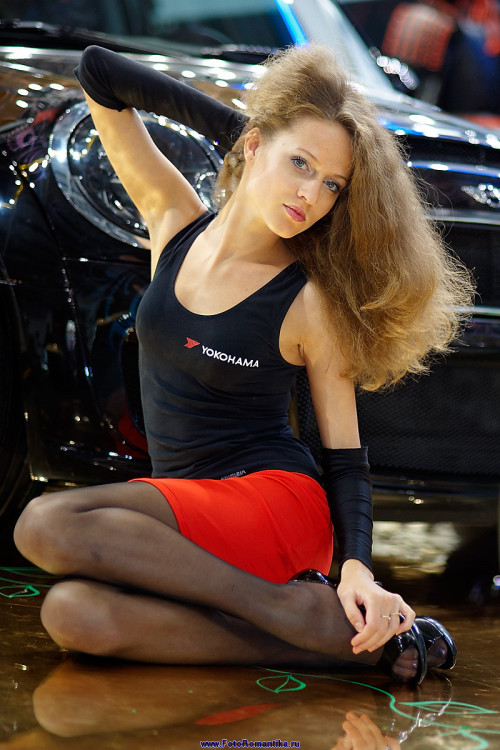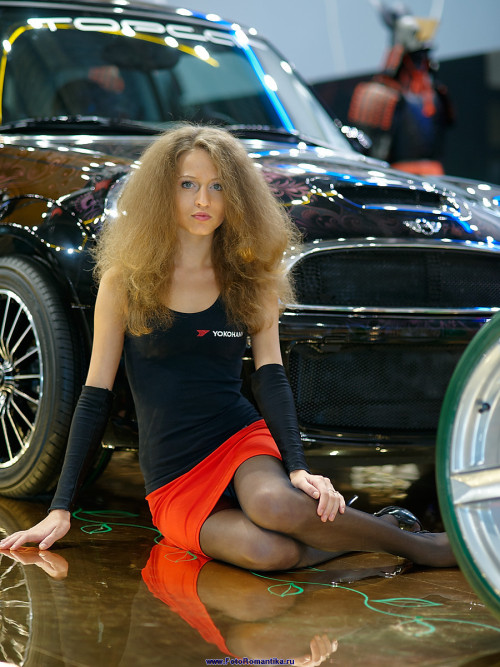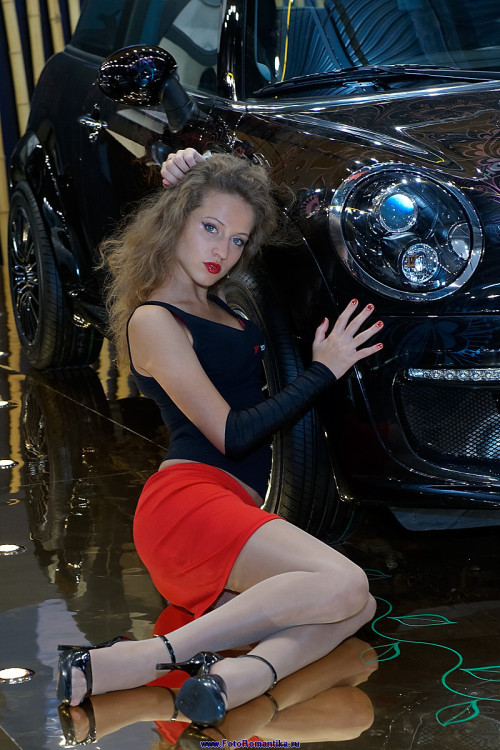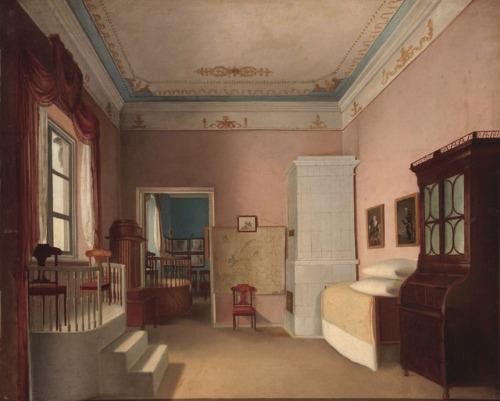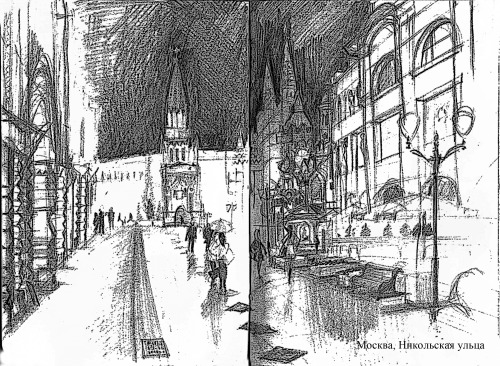#Москва
Newspaper kiosk on Marx Prospect in Moscow (1971)
Газетный киоск на Проспекте Маркса в Москве (1971)
Post link
FotoRomantika.Ru: ММАС-10. Александра. by Эдуард@fotovzglyad
Другие фотографии по меткам с сайта FotoRomantika.ru:
колготки черные
выставки
события
Александра (Саша) Озерская
портрет
Московский Международный Автосалон
Автомобильная выставка
Россия
события 2010 года
Москва
Post link
FotoRomantika.Ru: ММАС-10. Александра. by Эдуард@fotovzglyad
Другие фотографии по меткам с сайта FotoRomantika.ru:
колготки черные
выставки
события
Александра (Саша) Озерская
Московский Международный Автосалон
трусики белые
Автомобильная выставка
Россия
события 2010 года
Москва
Post link
FotoRomantika.Ru: ММАС-10. Александра. by Эдуард@fotovzglyad
Другие фотографии по меткам с сайта FotoRomantika.ru:
выставки
события
чулки резинка видна
чулки телесные
Александра (Саша) Озерская
Московский Международный Автосалон
Автомобильная выставка
Россия
события 2010 года
Москва
Post link
(со страницы Парк Музеон в Москве | KATYARU)
Солнце съело дом рядом с парком Музеон!!! А про сам парк читайте и смотрите в статье
Post link
Boris Kustodiev. Venice.
1913. Museum of Russian Impressionism, Moscow.
Boris Kustodiev went to Italy immediately after he had successfully defended his diploma thesis at the Academy of Fine Arts in St. Petersburg, where he had studied under Ilya Repin. He left for Europe with his young wife and newly born son - in the few months they spent abroad, they visited museums and accumulated a mass of impressions. However, his night landscape ‘Venice’ was made six years later, on his second journey, this time travelling alone. In a letter to his wife he wrote: “Venice is a city with which one could fall madly in love. Saint Mark’s Square and Cathedral on its own, the Doge’s Palace too - every time a whole range of new impressions. Venice is beautiful in the morning, in the daytime, and in the evening. Yesterday there was some big festival here, there were masses of people, ancient flags, gondolas with elegant gondoliers - they all passed the palace, and it sparkled in the sun!” Take a look at this painting featuring the night sky. It is painted with bold, free, dynamic brushstrokes, and brightly illuminated by the fireworks. The fire rises up first, before it falls into the water in a glitter of rain. Multi-coloured Chinese lanterns, the gondolas and the whole expanse of water – all is filled with the vibrating effects of different colours. We don’t see figures, instead we feel the visions of people - we see no boats, only flickering brushstrokes. This work was showcased at the Kustodiev’s posthumous exhibition in 1968 - the biggest exhibition of his work ever, held in the museum of the Academy of Fine Arts. At that time the painting was owned by a private collector, and after that show it was taken abroad. It was first exhibited in Russia only in 2013.
Post link
Unknown Artist. Room with a Stepped Floor before the Window.
Second quarter of XIX century. State Tretyakov Museum, Moscow.
Post link
Pyotr Konchalovsky. Various Flowers (Still-life with flowers and watering can).
1939. Museum of Russian Impressionism, Moscow.
“You cannot paint a flower ‘just like that’, in slapdash strokes - it needs as much study as anything else. Flowers are great teachers for artists, since discerning and comprehending the structure of a rose requires no less effort than deciphering that of a human face. Painting flowers for me is what practicing scales is for a musician: after a couple of hours’ work your brain goes into overdrive and instead of flowers, sounds crop up… It is a massive exercise for a painter.” Konchalovsky spoke of flower still-lifes with expertise and vigour; it was therefore, perhaps, no surprise, that towards the end of his life he was accused of ignoring the everyday life around him, and of only caring for his art. “At the moment I am much taken with painting ‘against the sun’, – he told his friend, the art critic Viktor Nikolsky in the early 1930s, – “I am interested in catching its hurling silver at the leaves, the trees, at everything – a rather cold kind of silver in so many hues… and such gliding light over the foliage.” Konchalovsky settled far from Moscow, in a place called Bugry near the town of Maloyaroslavets, where he tended his garden, made honey, bred pigs and smoked gammon. Following such a traditional way of life, he did not welcome the comforts of civilisation: there was no electricity in the house, only oil lamps, and the radio was always switched off to shut out news of the outside world.
Post link
Mikhail Shemyakin. Girl in a Sailor Suit (Sonechka).
1910. Museum of Russian Impressionism, Moscow.
Sonechka… The name of Mikhail Shemyakin’s young model is the only thing that researchers have been able to discover about the girl. We’re left to guess who she was, and to enjoy the beautiful technique of her portrait – “Girl in a Sailor Suit".
Look for a moment at the background - it’s almost impossible to understand just where she may be sitting. The background was executed in wide strokes, while the image of the young girl herself was clearly created with slower, softer and more tender brushstrokes, with both rapture and delight. The composition is unusual, built around a diagonal, and the light forward tilt of the head was a favorite touch of the artist. The bold and generous reflections of light on the girl’s face, and the collar and cuffs of her sailor suit are called “overtones” and emphasize the heroine’s vivacity. “His paintings are filled with grace, rhythm and subtlety, he seeks to grasp man’s nature and inner life with just a few strokes, and is perfectly precise in approaching but never crossing the fine line between artistic creation and a piece of craft” – such was the high opinion of one art critic about Shemyakin. The artist favored portraiture over all other genres, rather like his teacher Valentin Serov. He excelled in it, and received well deserved recognition from Igor Grabar, the renowned Russian painter, art historian and critic: “A new powerful master of portraiture, a highly professional artist has emerged on the Russian artistic scene. Shemyakin’s portraits have always been skillfully drawn, well composed and are outstanding with their strong sense of character!” Shemyakin portrayed many famous people of his time, such as Vladimir Filatov, the Russian-Ukrainian ophthalmologist and surgeon, and the Russian botanist and physiologist Kliment Timiryazev. But musicians were far and away his favourite subject, earning him the “high nickname” from Igor Grabar – “Painter for the Musicians”. Vladimir Mayakovsky, who was also educated in the arts, called Shemyakin a “realist-impressionist-cubist”. Shemyakin inherited his recognizable “wide manner” of painting from his teachers Valentin Serov and Konstantin Korovin, and it would later be recognized as one of the main features of Russian fine art of the late 19th century.
Post link
Isaak Brodskiy. Vladimir Lenin at the Rally of Putilov Plant Workers in May 1917.
1929. State Historical Museum, Moscow.
In February 1917 strikes at the factory contributed to setting in motion the chain of events which led to the February Revolution. In 10 March 1919 at protest rally in the factory striking workers condemned the Bolshevik government in a resolution claiming “…the Bolshevik government is not the authority of the proletariat and peasants, but the authority of the dictatorship of the Central Committee of the Communist Party…”. When Lenin came to Petrograd to give a speech on 13 March the workers demanded his resignation and when Zinoviev tried to address the workers he was greeted with shouts: “Down with the Jew!”. Strikers barricaded themselves in the factory which was stormed by the Cheka to suppress the strike and about 200 workers were executed.
After the October Revolution it was renamed Red Putilovite Plant (zavod Krasny Putilovets), famous for its manufacture of the first Soviet tractors, Fordzon-Putilovets, based on the Fordson tractor. The Putilov Plant was famous because of its revolutionary traditions. In the wake of Sergey Kirov’s 1934 assassination, the plant was renamed Kirov Factory No. 100.
You may find more information about the factory here.
Post link
Aleksandr Benois. Chinese pavilion. Jealous husband.
1906. State Tretyakov Gallery, Moscow.
Benua, confined within the limits of his retrospective view of history, believed that the ages and style do not come one after the other, but are unique and closed within them. Rococo with its enthusiasm for things Chinese, Oriental ornamentalism, was similar to the style of Art Nouveau, of the time of Benua. The image of Rococo, the most refined and exquisite style of the 18th century, beloved by the artists of The World of Art, is embodied, according to Benua, in the shapes of outlandish Chinese pavilion, which resembles a light burning in darkness. This fragile island of light is lost between two abysses: a dark starry sky and its reflection in water. The instability of the vision is emphasized by the comic fussing of the characters, dolly ladies and gentlemen, resembling a Chinese shadow show. The style of Rococo, like a bright flash, glared up on the horizon of European culture and has long been extinguished, with a mere flicker remaining.
Post link
Mykola Samokysh. Courage Of General Raevsky.
1912. Museum-Panorama the Battle of Borodino, Moscow.
July 23, 1812 the battle of Saltanovka, which has become one of the most legendary pages of the life of General Raevsky. This feat glorified General in the nation. Then arose a legend which was reflected in the famous painting — Rajewski goes on the attack, and next to him are his sons, 17-year-old Alexander and 11-year-old Nicholas.The General himself said it was just a legend. The sons were, indeed, in his case, but in attack they did not go. But in people’s memory Raevsky was a man who sacrifices for the homeland the most expensive.
Post link

Твоя жена любит зиму и секс. Your wife like winter and sex.

Итак, я тут был недавно в Москве. В общей сложности пробыл я там неделю. И я хотел по этому поводу написать большой обстоятельный текст, но он умирал, так и не родившись. По этому, только держите только самые интересные выдержки.
Москва огромная
В ней большое очень всё. Здания, дороги, улицы, дворы, районы, цены, занятость людей, спешка. И это как хорошо, так и плохо.
Хорошо тем, что там всегда есть чем заняться, куда сходить, на что посмотреть, в чем принять участие. Каждый день можно посещать кино, театры, музеи, выставки, конференции, воркшопы, семинары, тренинги, инсталляции и представления, а они никогда не закончатся. В любой день и в любое время можно сделать себе интересно.
Время и расстояния
Плохо тем, что много времени прожигается зря. Тысячи часов уходят на дороги, пробки, хождения, ожидание, попытки скоординироваться, добраться и попасть. На это уходит приличная часть жизни, которую реально жалко.
Помню, когда я приехал в Омск, меня удивляло, что на одну какую-то задачу можно потратить пол дня. Нам с братом нужно было купить переходник для жесткого диска с SATA на USB и мы проездили пол дня по магазинам. В Уренгое, откуда я родом, можно было обойти весь посёлок и все магазины за час. В Москве ты можешь потратить весь день ради того, чтобы добраться до какой-то одной точки и обратно.
Ритм
Плохо то, что Москва насильно вгоняет тебя в бешенный ритм, даже если ты этого не хочешь. По-началу я много тупил и не успевал за городом, под конец я начал мчать как и все вокруг, а это очень утомляет. Я чувствовал, как жизнь проносится мимо.
Метро
Самое негативное впечатление на меня оказало московсое метро. Оно очень быстрое и позволяет огромнейшим массам людей перемещаться по городу. Но оно ужасно шумное и не удобное.
Когда я рассказываю людям про шум, все без исключения говорят мне, что можно приспособиться, привыкнуть, потом не замечаешь. Время можно проводить с пользой, читая книгу или слушая подкасты.
Но, это не тот путь, который выберет для себя человек, который любит себя больше, чем возможную прибыль. Я могу привыкнуть ходить в обуви на 3 размера меньше. Страдать и мучиться каждый день, натирать огромные мозоли, убивать свои ноги и придумывать способы, как бы уменьшить эту боль. Но я не буду этого делать, потому что я люблю себя. Так и с метро.
Можно проводить по 4 часа в день, трясясь в переполненном вагоне, затыкая уши вакуумными наушниками и делая музыку погромче, пытаясь читать книгу с экрана телефона, стоя в вагоне и держась одной рукой за поручень. Можно говорить себе, что это нормально и что это стоит того. А можно этого не делать, живя в городе, который приспособлен для жизни обычного человека намного лучше.
Это моё мнение и мало вероятно, что оно изменится на этот счет.
Рабочая атмосфера
Что мне больше всего понравилось в Москве, так это рабочая атмосфера. Город постоянно живёт, движется вперёд и развивается. Люди любят своё дело и горят им. Они подпитывают друг друга, подгоняют и тянут за собой. Атмосфера работы и занятости намного сильнее, чем в Омске. Крутых ребят вокруг не десятки, а тысячи и все они всё время что-то делают. С любым из них всегда можно поговорить и чему-то научиться, для любой затеи можно найти себе дюжину единомышленников. И это очень мотивирует.
Американский образ
Многие люди, с которыми я познакомился в Москве, считают, что быть свободным и холостым до 35 — это нормально. Многие в принципе не хотят заводить семью и детей, обременять себя этим. В Омске таких людей в моём окружении я могу назвать по пальцам одной руки, а там их было много. Как некоторые из вас могут догадаться, я не очень сильно разделяю такую позицию, но может для них такая жизнь и к лучшему.
Депрессия и одиночество
За неделю, проведённую в Москве, я случайно 4 раза услышал разговоры о депрессии от прохожих. И 2 раза об одиночестве. Это на 4 случайно услышанных разговора о депрессии больше, чем я когда-либо слышал в Омске. Разговоры об одиночестве я вроде слышал, но припомнить не могу.
Миф про деньги
Говорят, что в Москве все зарабатывают много. Но, на самом деле не все. Я повидал много людей, пока был там и все они были очень разными. Были ребята, которые делают своё дело и очень неплохо зарабатывают. Были те, кто работает на дядю и тоже неплохо зарабатывает. Но, были и те, кто живя в Москве получает омские деньги. При этом, цены для всех одинаково высокие. Так что если думаешь переезжать в Москву, то будь уверен в том, что будешь хорошо зарабатывать.
Мой вывод
Я считаю, что в Москве много клёво. Особенно, если ты хорошо зарабатываешь. Но жить там я бы не хотел и никому бы не рекомендовал. Лучше найти способ хорошо зарабатывать в том городе, где ты живёшь, а в Москву мотаться на интересные события и на посмотреть. Самое интересное, это реально выйдет намного дешевле как в плане денег, так и потерянного времени и здоровья.
Конечно, если ты крутой специалист, то ты намного легче найдёшь там работу более интересную и сильнее оплачиваемую, чем у себя в небольшом городе. Но, я уверен, что хорошо зарабатывать любимым делом можно в любом населённом пункте, а вот прожить хорошую и приятную жизнь, не жалея о потраченном времени, намного сложнее. По этому, я постараюсь найти способ обеспечить себя на месте :-)
Текст всё равно получился большим, по этому не перечитываю.
Если вспомню ещё что-то — напишу.



